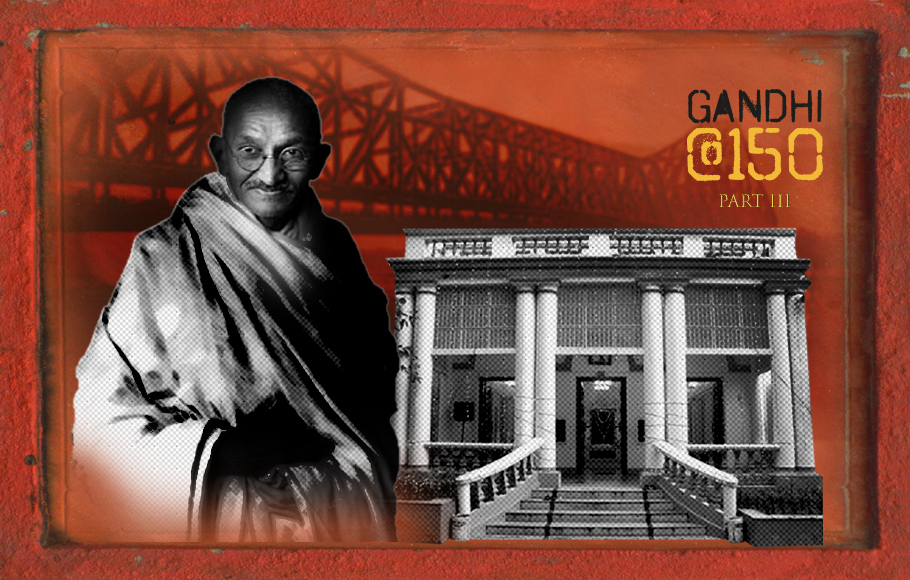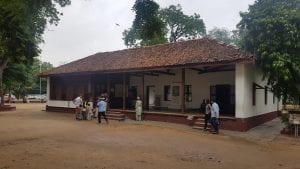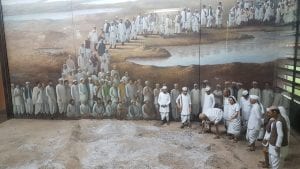
Gandhi will continue to thrive in spite of attempts to turn his legacy on its head
In today’s polarised world where everything Gandhi seems to be turned on its head, it would be tempting to conclude that Gandhism is dead. Such thoughts are unavoidable in an age where his assassin is glorified and his action justified unabashedly in social media platforms.

On the banks of Sabarmati river in Ahmedabad sits a small cottage. On its left corner is the room where Mahatma Gandhi used to receive his visitors. A wooden writing desk, a cushion with a backrest and a spinning wheel are the only things that adorn the space.
On his return to India from South Africa in 1915, Gandhi set up his first Ashram at Kochrab area of the city. Two years later he moved to the outskirts in an open space overlooking the river to set up Sabarmati Ashram as he wished to do some experiments in living, farming, cow rearing, khadi weaving etc.
Also read: Mahatma Gandhi @ 150
Today the Ashram is almost in the middle of the city. It has a well-paved road on one side and a solidly built promenade on the other. A flight of stairs leads to a large sliding gate overlooking the river front. Perhaps the gates are now used to receive VVIPs and their large motorcades.
If one were to ignore the trappings surrounding the Ashram, its inner spaces are serene and its simplicity breathtaking. It is inconceivable that a man dressed in loincloth sat here and took on the might of the British Empire and succeeded. His only weapons were his convictions and beliefs.

A small library within the Ashram sells spinning wheels as memorabilia. The miniature wooden replicas are a reminder of his economic plan. Gandhi conceived charka as source of employment. For him village was the smallest economic unit. He thought the produce would be locally consumed sustaining the environment.
Since in the 1930s Marxism as a philosophy was at its height, Gandhi’s ideas were ridiculed as woolly headed. Mao Zedong, who had then led a agrarian revolution, by forcibly evicting large landlords in China, was dismissive when he was told about Gandhi’s passive, non-violent protests and simple economic theories.
Gandhi’s contemporaries in India too differed. Jawahar Lal Nehru, Madan Mohan Malviya and Subhas Chandra Bose were of the view that only through rapid industrialisation India could be lifted out of its abject poverty.
Probably Gandhi was off the mark as far as economic growth was concerned as the achievements of modern economy are mixed at best. It has resulted in rapid growth but a quarter of the Indian population or nearly 400 million people still live in abject poverty. After six decades of independence the double digit growth rates lasted only few quarters and now the economy is back to its sluggish past.

But the bigger Gandhian message exposes the missing morality in the contemporary world. The quest for profit by corporates and intense politicisation of development and its use as a poll plank has reduced it to a propaganda tool. The narrative now is reduced to a battle cry “I did this in seven months, what did you do in 70 years,” forgetting perhaps that in a democracy rulers are elected to serve the people.
The visitors to the Ashram are reminded of Gandhi and his philosophy through a walkthrough museum. The format is revealing. It’s all about constant questioning. Gandhi, who discovered his prowess as a writer and editor in Natal (South Africa) is introduced through questions. “Was Gandhi a casteist? Was he dictatorial? Did he exploit the workers in the Ashram? How did he deal with his sister who refused to share a meal cooked by lower castes? How did Gandhi deal with his wife? What were the instructions for the Ashram mates in the event of his arrest, and so on.
The display boards answer the questions illustrated with newspaper cuttings, Gandhi’s hand written notes and black and white pictures. All this looks surreal in today’s world where those in authority and power refuse to take questions, hide behind official media to tell us about their “man -ki-baath” or inner conscience. Social media spews venom and attacks rivals using fake identities.
Biographers tell us that Gandhi’s son Harilal was a tormented soul. He wanted freedom from his father who was dominating. Gandhi did not allow him an education in England because he had no money. He wanted his sons to participate in Satyagraha. When scholarships were offered to the inmates of Tolstoy farm in South Africa Gandhi took care that his children didn’t get them. Cut to the present list of politicians— the Nehru-Gandhi clan, Indira, Sonia, Rajeev, Rahul. The famous dynasts of India— the Abdullas, the Yadavs, the Scindias, the Pawars, the Sangmas, the Gowdas, the Karunanidhi clan. The list is endless.

Gandhi ensured probity in financial dealings in the Ashram. Corruption was unheard of in the Congress movement. Though studies have indicated corruption in the British Army it hadn’t become a social malice as it is now.
Sabarmati Ashram is spartan and clean. Gandhi believed in openness. He wanted fresh air from all directions to visit his room. He lived close to nature, tried to understand its rhythm. Climate change wasn’t the subject discussed those days— but today rising sea water levels, frequent floods, incessant unseasonal rains, hot prolonged summers and rapidly melting glaciers are trying to tell a desperate story and the political class is unwilling to hear. Gandhi would have been different.
He believed “cleanliness is next to godliness”. In 1936 he arrived in Wardha and set up an Ashram. The first task given to the volunteers was to ensure sanitation of nearby villages by scooping human excrement wherever it was found. Biographer Joseph Lelyweld says after initial enthusiasm volunteers had doubts as it had no impact on the villagers. In fact they would summon the volunteers to clean various places. Gandhi advised them to persist, plant flowers and water them after cleaning the turd. He told them “cleanliness can be an art.”
The government has claimed that rural sanitation is 99 per cent achieved. Prime Minister, Narendra Modi, will be declaring the country “open defecation free” this evening at a function in Sabarmati. While the Swachha Bharat campaign should be welcomed, it must be reminded that the task is far from over: last week two Dalit boys were killed in Madhya Pradesh as they were found defecating in the open.

Gandhi learnt his early lessons in politics being a Non Resident Indian. In South Africa he started as a lawyer for Gujarati Muslim traders. He organised the community and became the leader of both Hindus and Muslims. Working with indentured labourers he understood the caste structure, working with Tamils he understood the importance of language, working with foreign followers he learnt about new cultures, he learnt about patriarchy and need to respect women.
The diaspora was largely cheap indentured labourers imported from India. Gandhi fought for their rights and suffered violent attacks and survived near death experiences. Today the diaspora is vibrant, powerful and represents the best of Indian talent in all walks of life. They are the new force multipliers of India abroad.
Gandhi firmly believed in Hindu-Muslim unity. He believed the two can exist together and imagined a united India. He started off as someone who believed in the concept of Varnashram but quickly discarded it and reinvented himself as a champion of social reforms. But in the end as India obtained independence he was a broken man as the newly carved out northern and eastern borders were engulfed in communal flames.
Also read: Freedom and integration: A swaraj of the Mahatma’s dream
Gandhi sat in numerous hunger strikes. He was often seen as stubborn and illogical as he used this as a weapon to bring together warring communities, castes and factions. The most dramatic incident was in Calcutta where communal riots broke out and he faced rioters baying for blood. Though weak and frail he was ready to sacrifice himself and the rioters responded by surrendering their arms and falling at his feet.
In today’s polarised world where everything Gandhi seems to be turned on its head, it would be tempting to conclude that Gandhism is dead. Such thoughts are unavoidable in an age where his assassin is glorified and his action justified unabashedly in social media platforms. These are exceptions and Gandhism would continue to thrive. This is best indicated by mainline politicians across the spectrum who continue to shower encomiums on him.

